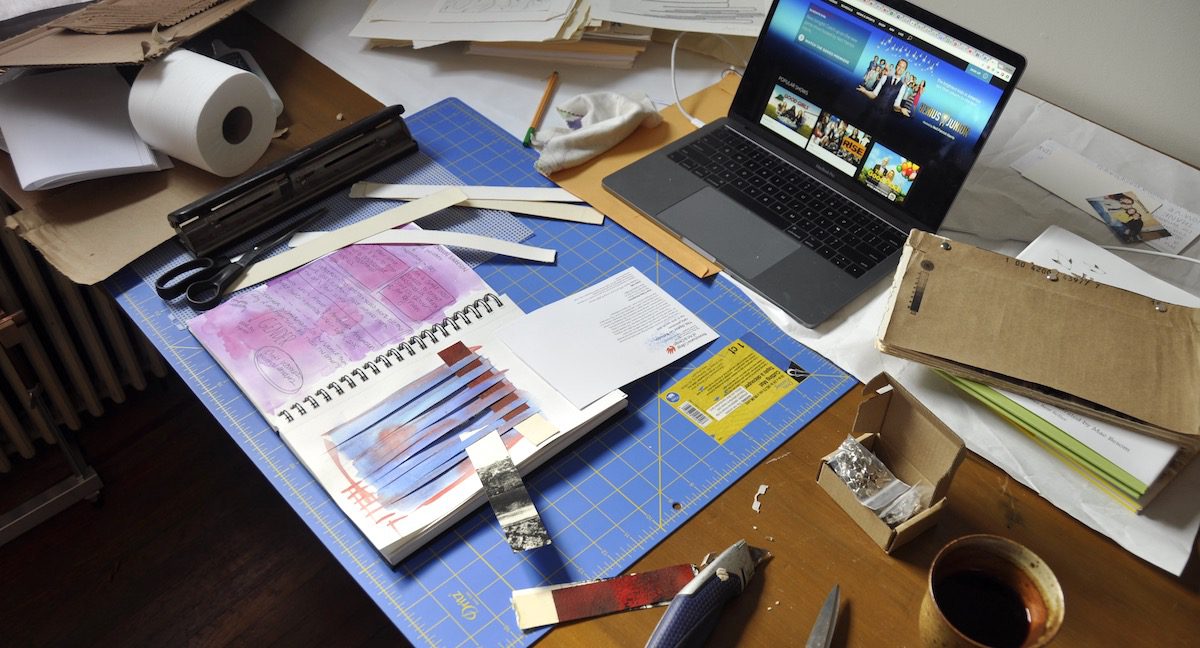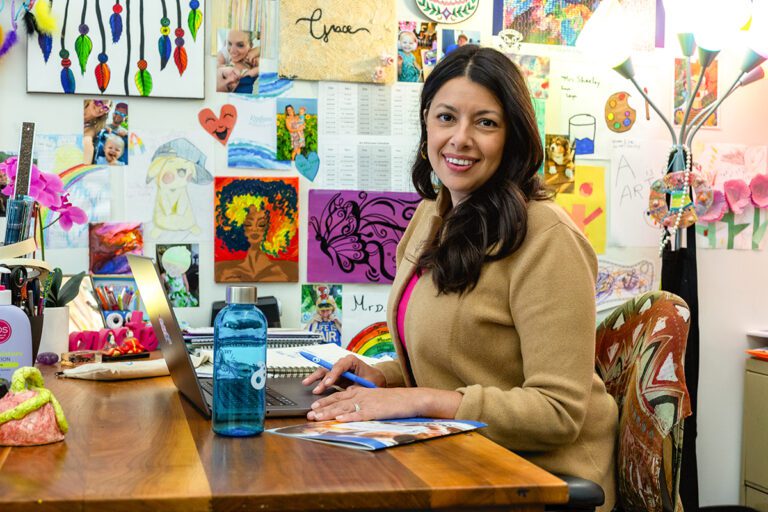If you’ve ever wondered how in the world a subject like art can be taught online, you’re not alone.
I’d taken a variety of courses and earned my master’s degree online. And yet, I still wondered, could art be taught the same way?
You likely have a lot of the same questions I did five years ago.
While there isn’t one right way to teach art online, I’m going to take you behind the scenes and share how an online art class works.
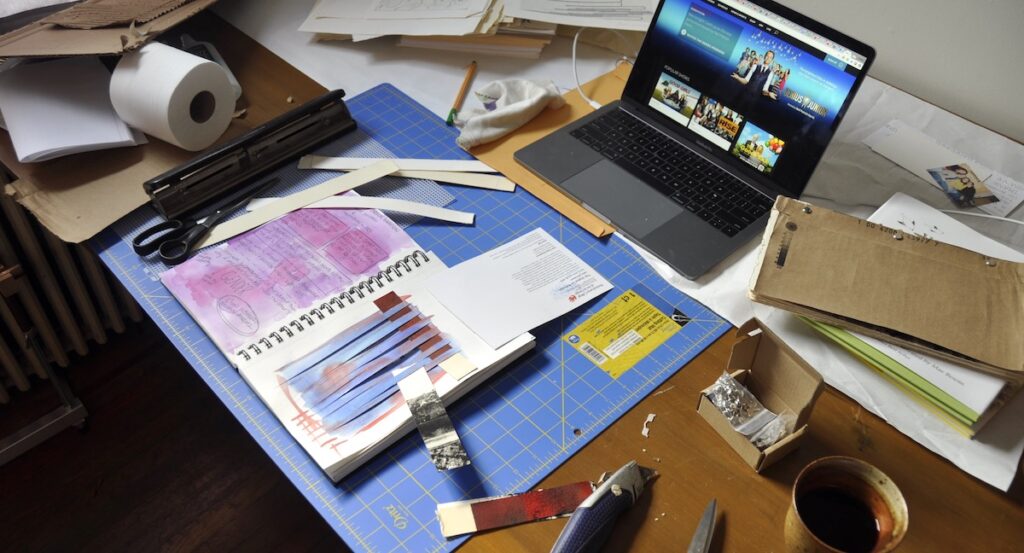
Let’s start at the beginning. How do you find an online teaching job and what credentials do you need?
There is a wide range of ways to can teach online. Your goals will impact how and where you teach. You can build a website and create online courses on your own, work for a charter school offering virtual learning opportunities, or teach for a college or university offering online courses. I’ve found all of my online teaching positions by searching on Google.
Most schools don’t require additional credentials, and some don’t even require a teaching certification. That being said, they are going to want you to demonstrate you have a strong background and understanding of technology. For some positions, I’ve built the website and created all of the course content, where others come with the website and content in place. Do your research before applying and determine what level of responsibility and autonomy you can handle.
How do you teach a hands-on class in an environment where you can’t touch anything?
There are two parts to this answer. You have to take a close look at your teaching philosophy and figure out how to effectively utilize technology.
Whether teaching in-person or online, I don’t touch students’ artwork. Reflect on your practices in the art room. Do you make marks on your students work? If you do, it’s likely you’ll find teaching online difficult.
In the online environment, if a student needs extra help or feedback on their work, you can communicate with them through a video. You might create an additional demonstration, do a screencast with their artwork on the screen so you can point out areas of improvement, or add a link to helpful videos on YouTube.
In short, when teaching online, anything you would demonstrate in your classroom becomes a video.
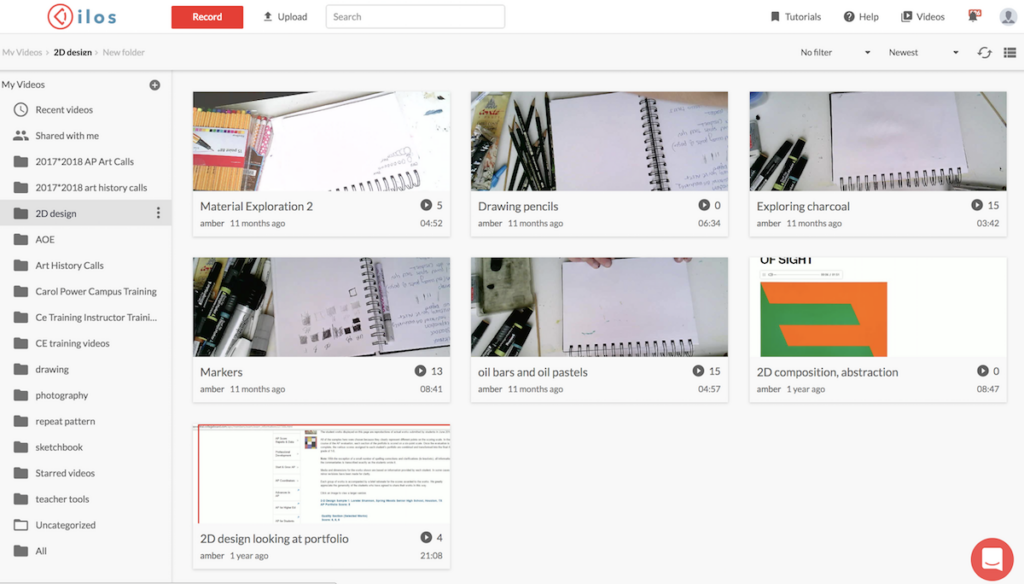
There is a wide range of inexpensive tools for creating video. I use an Ipevo document camera and my laptop for almost all videos. I choose to use ilos Video to create screencasts and store my videos. But, you can also use tools like QuickTime player or Soapbox. For live video calls, I love Zoom, but you can also explore tools like Crowdcast, appear.in, and Google Hangouts.
To better understand what an online class looks and feels like, take one yourself.
While taking the course, pay attention to the format and delivery, making a note of what you like and don’t like and why. The Art of Education offers seven online studio courses. These courses are a perfect way to experience learning art online.
When teaching online, you’re going to encounter many of the same problems you would in a classroom.
Many people ask, “What happens when students don’t submit work?”
When it comes to policies and procedures, they reflect what I would do in a physical classroom. The year starts by having both students and parents sign a contract. The contract asks parents and students to agree to stay on top of assignments, follow due dates, and communicate if there are any problems. I also sign a contract, sharing what expectations I promise to meet, like posting work at least one week in advance, providing feedback within forty-eight hours, and responding to emails within twenty-four hours, except on weekends.
When a student first misses work, I reach out, ask what’s going on (via email or a phone call), and offer a short extension. If a student continues not to submit work, I reach out to both the student and the parent, reminding them of the course expectations. If needed, I schedule a video call to develop a plan to get the student back on track. If a student continues not to submit work, unfortunately, they don’t receive credit for the course.
You know building relationships with your students is essential. So how do you build relationships when you’re never in the same room as your students?
This is a great question and one I’m always trying to improve. The number one thing I do is have live weekly video calls. While it still isn’t the same as being in the same room, it’s close. These calls vary from being extremely casual to following a clear plan and lesson based on what students are working on. As needed, one-on-one calls are scheduled. You can also connect with students by sharing personal photos, asking about their lives, and sending snail mail.
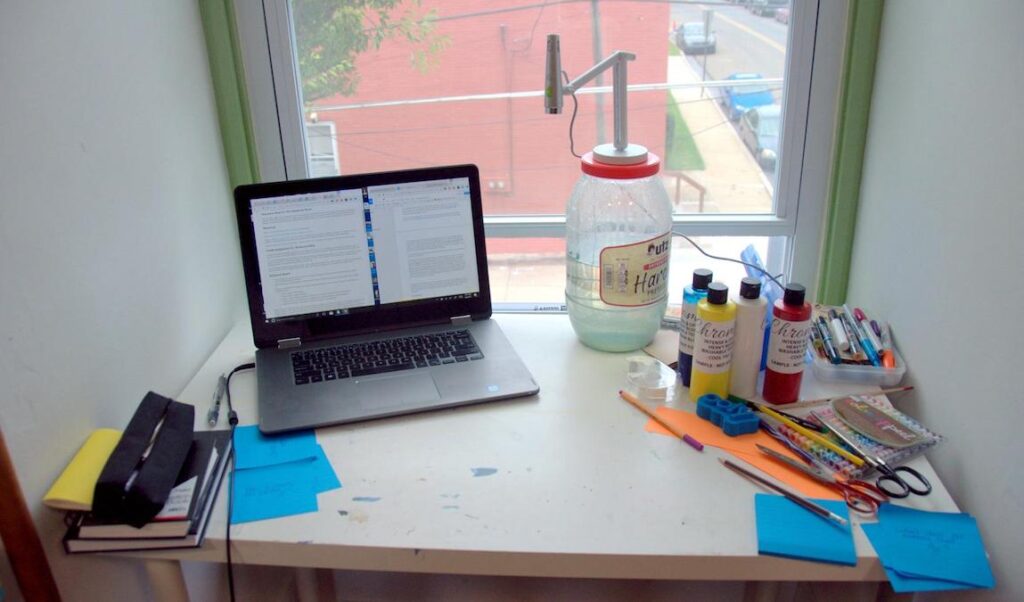
What about figuring out a schedule that works for you? Do you have to be online around the clock?
Teaching online allows for flexibility in your wardrobe and schedule. Some virtual schools require you to be on your computer at specific times throughout the day, and they may also need you to be live on video. Other positions may not have any specific requirements about when you work. Regardless, if you are on video, make sure your top half looks professional.
In my experience, I find it best to create a schedule and stick to it.
The flexibility of teaching online is great, but it’s important to know yourself and be sure you can handle the amount of freedom without allowing the work to pile up. If you’re not careful, a flexible schedule can also lead to you feeling like you’re working all of the time.
When teaching online, it’s likely you’ll receive emails from students around the clock, seven days a week. It’s essential to set clear expectations and boundaries for when you’ll be online and how long your response time will be.
Tell students what hours you plan to check-in. You should also be clear about communication over the weekend and when you’re traveling.
Now that we’ve covered some of the logistics, you’re probably wondering how does the pay for online teaching align with your current salary?
If you end up working virtually for a charter school or college, it may be similar to in-person work. In my experience, my pay is a combination of an hourly rate and a fee per student, so it varies depending on how many students register for a course. The pay structure varies based on the school/company and grade level.
As you think about teaching online, if it’s a pay-per-student model, think about your temperament for risk, and how much you need each paycheck. If you’re in a non-salaried position, you will not know how much you’re going to make month-to-month. Some positions also don’t come with health insurance or a retirement plan, making it important that you do your research.
Teaching art online isn’t drastically different from the classroom. Students are students. They come with the same joys and challenges. It’s your job to learn, experiment, and continually adjust to their needs.
What questions do you still have about teaching art online?
What interests you the most about teaching art online?
Magazine articles and podcasts are opinions of professional education contributors and do not necessarily represent the position of the Art of Education University (AOEU) or its academic offerings. Contributors use terms in the way they are most often talked about in the scope of their educational experiences.
